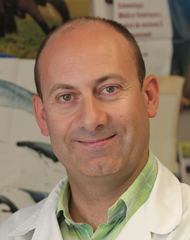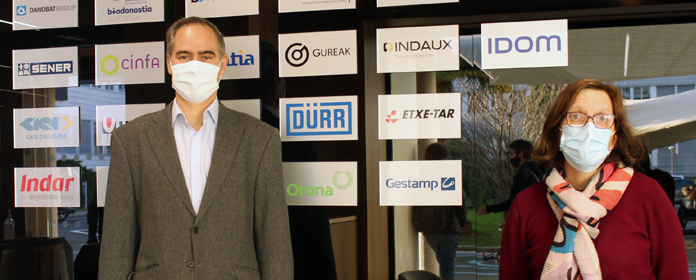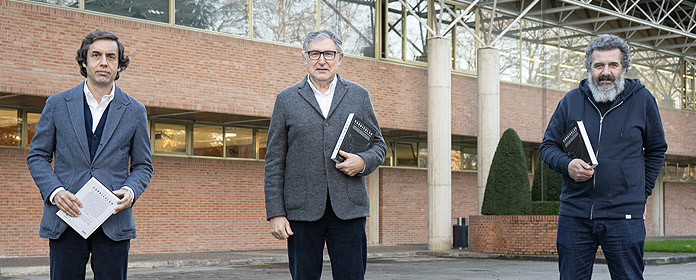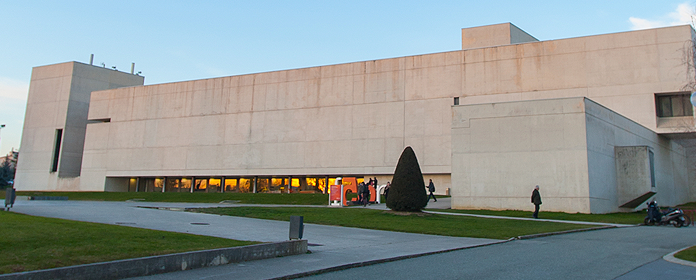Descubierta en las Cuevas de Altamira una nueva especie de colémbolo
El artrópodo, parecido a un insecto y de poco más de un milímetro, actúa como vector de dispersión de microorganismos y los científicos proponen estudiar si contribuye al deterioro de las pinturas de la Cueva

FOTO: Manuel Castells
Investigadores españoles han descubierto en las Cuevas de Altamira una nueva especie animal: un colémbolo perteneciente al género Pseudosinella. Los colémbolos son un grupo de artrópodos hexápodos (de seis patas) parecidos a los insectos, que disponen de un órgano especializado para el salto. El estudio, publicado en la revista ZooKeys, está dirigido por los investigadores de la Universidad de Navarra Enrique Baquero y Rafael Jordana, junto a la bióloga Lucía Labrada y el consultor ambiental y bioespeleólogo Carlos Glez. Luque.
La especie ha sido bautizada con el nombre Pseudosinella altamirensis y, por la forma en que se comporta en las Cuevas de Altamira, los científicos ponen bajo sospechaque pueda actuar como vector de dispersión de ciertos microorganismos, ya sea porque se quedan adheridos a su cuerpo, o por ser digeridos y dispersados con sus excrementos.
Enrique Baquero, que ha liderado el estudio, explica que Altamira es una cueva especialmente sensible, pues presenta una diversidad microbiana muy elevada. “Los colémbolos son casi todos fungívoros (comen hongos). En una cueva donde hay pinturas valiosas pueden hacer llegar esporas de hongos a ellas y se podrían deteriorar”, asegura. Por eso, proponemos desarrollar un estudio “para averiguar si Pseudosinella altamirensis (la nueva especie descrita) es un problema o no”, explica el profesor de Zoología y Ecología, e Investigador del Instituto de Investigación en Biodiversidad y Medioambiente de la Universidad de Navarra (BIOMA).
Saber si actúa como vector de dispersión de microorganismos, según afirma Lucía Labrada, es fácil de comprobar si se observa al microscopio el tracto digestivo del colémbolo. “Hemos sugerido a la dirección del Museo de Altamira investigar si mantienen un intercambio de bacterias con las colonias que viven en techos, paredes y suelos, contribuyendo así a la dispersión y diversificación de las comunidades bacterianas presentes en la Cueva, sobre todo las implicadas en los procesos de biodeterioro”, concluye Labrada.
Trabajos financiados por el Gobierno de CantabriaEste descubrimiento se ha producido durante los trabajos llevados a cabo en la Comunidad de Cantabria por Carlos Glez. Luque, financiados por el Gobierno de Cantabria. La investigación comenzó en el año 2000 con el estudio sobre la fauna de invertebrados de las Cuevas de Altamira, contando con el respaldo del Museo Nacional y el Centro de Investigación de Altamira y de su director, José Antonio Lasheras, a quien se le dedica la publicación a título póstumo.
El reducido tamaño de la nueva especie (de poco más de 1 mm de largo) no ha sido impedimento para encontrarla en otras cuevas de Cantabria. Una singularidad de este hallazgo, si lo comparamos con la inmensa mayoría de las especies nuevas que se describen en la actualidad, es que “nadie había encontrado o estudiado jamás dicho colémbolo; algo llamativo, dada la importancia de las Cuevas de Altamira”, subraya Carlos González Luque.
Rafael Jordana, catedrático emérito de Fisiología Animal y de Zoología de la Universidad de Navarra, señala que “su existencia habría pasado inadvertida por habitar en suelos que mantienen gran cantidad de huecos y espacios libres que les sirven de ruta de movimiento, escape y refugio”. Dentro de las cuevas “sus hábitos alimenticios, comportamiento y estructura poblacional están estrechamente relacionados con la disponibilidad de nutrientes y las condiciones ambientales que favorecen o dificultan la presencia y proliferación microbiana”, afirma.
Referencias bibliográficasBaquero E, Jordana R, Labrada L & Luque CG (2020): A new species of Pseudosinella Schäffer, 1897 (Collembola: Entomobryidae) from Altamira Caves (Cantabria, Spain). ZooKeys, 989: 39-54.
Luque CG & Labrada L (2016): La fauna subterránea de las cuevas de Altamira (España). Consideraciones para la conservación del arte rupestre clasificado Patrimonio Mundial. Boletín de la Real Sociedad Española de Historia Natural, Sección Biológica, 110: 93–120.
Contacto: ebaquero@unav.es




